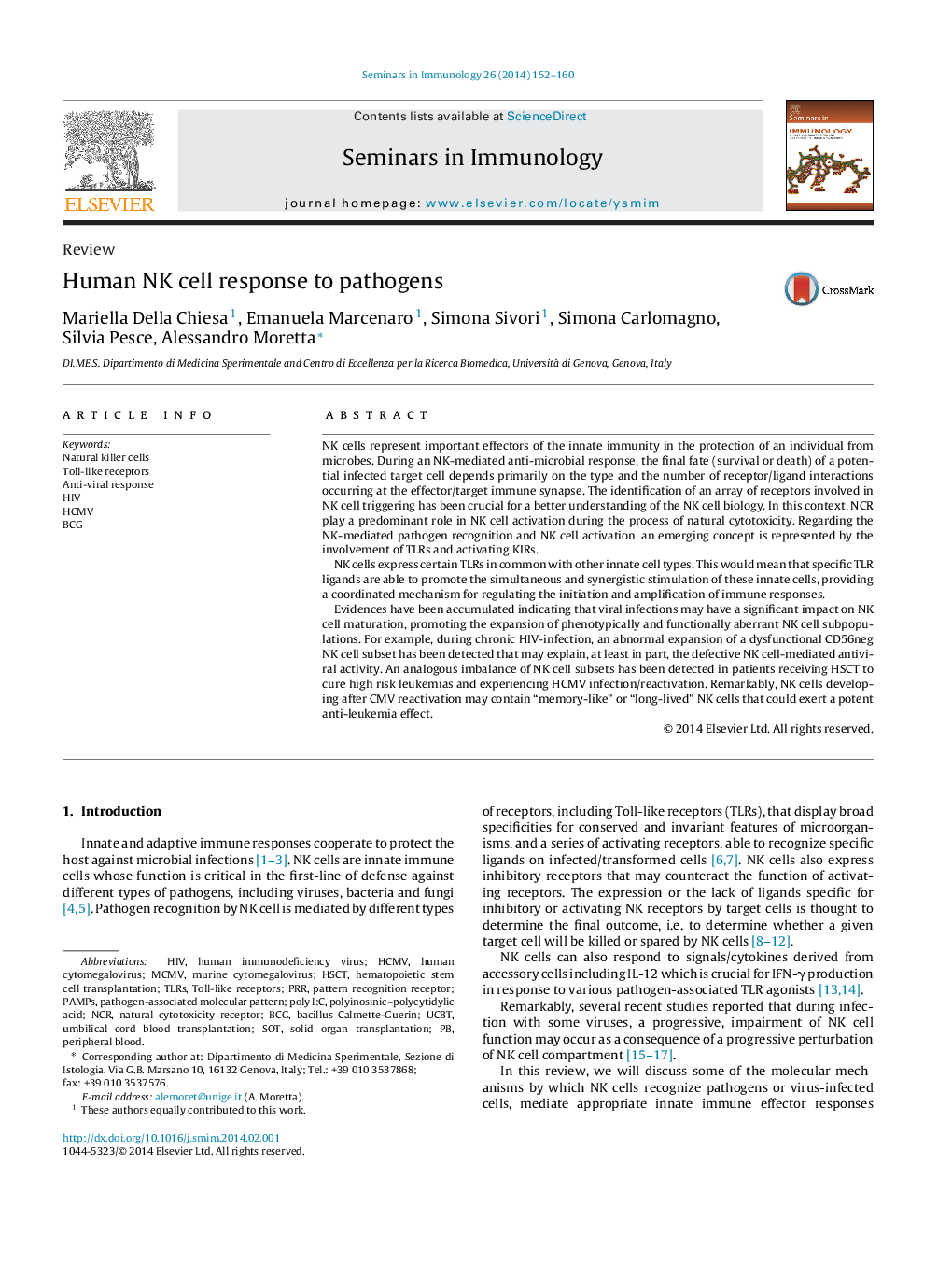| کد مقاله | کد نشریه | سال انتشار | مقاله انگلیسی | نسخه تمام متن |
|---|---|---|---|---|
| 3391361 | 1221038 | 2014 | 9 صفحه PDF | دانلود رایگان |
• TLR mediated activation of NK cells impacts on the quality of immune responses.
• An aberrant CD56neg NK cell subset is greatly expanded in HIV-viremic individuals.
• NK cell receptor repertoire is skewed toward late differentiation stages by HCMV.
• HCMV infection favors the differentiation of “memory-like” NKG2C+ KIR+ NK cells.
NK cells represent important effectors of the innate immunity in the protection of an individual from microbes. During an NK-mediated anti-microbial response, the final fate (survival or death) of a potential infected target cell depends primarily on the type and the number of receptor/ligand interactions occurring at the effector/target immune synapse. The identification of an array of receptors involved in NK cell triggering has been crucial for a better understanding of the NK cell biology. In this context, NCR play a predominant role in NK cell activation during the process of natural cytotoxicity. Regarding the NK-mediated pathogen recognition and NK cell activation, an emerging concept is represented by the involvement of TLRs and activating KIRs.NK cells express certain TLRs in common with other innate cell types. This would mean that specific TLR ligands are able to promote the simultaneous and synergistic stimulation of these innate cells, providing a coordinated mechanism for regulating the initiation and amplification of immune responses.Evidences have been accumulated indicating that viral infections may have a significant impact on NK cell maturation, promoting the expansion of phenotypically and functionally aberrant NK cell subpopulations. For example, during chronic HIV-infection, an abnormal expansion of a dysfunctional CD56neg NK cell subset has been detected that may explain, at least in part, the defective NK cell-mediated antiviral activity. An analogous imbalance of NK cell subsets has been detected in patients receiving HSCT to cure high risk leukemias and experiencing HCMV infection/reactivation. Remarkably, NK cells developing after CMV reactivation may contain “memory-like” or “long-lived” NK cells that could exert a potent anti-leukemia effect.
Journal: Seminars in Immunology - Volume 26, Issue 2, April 2014, Pages 152–160
